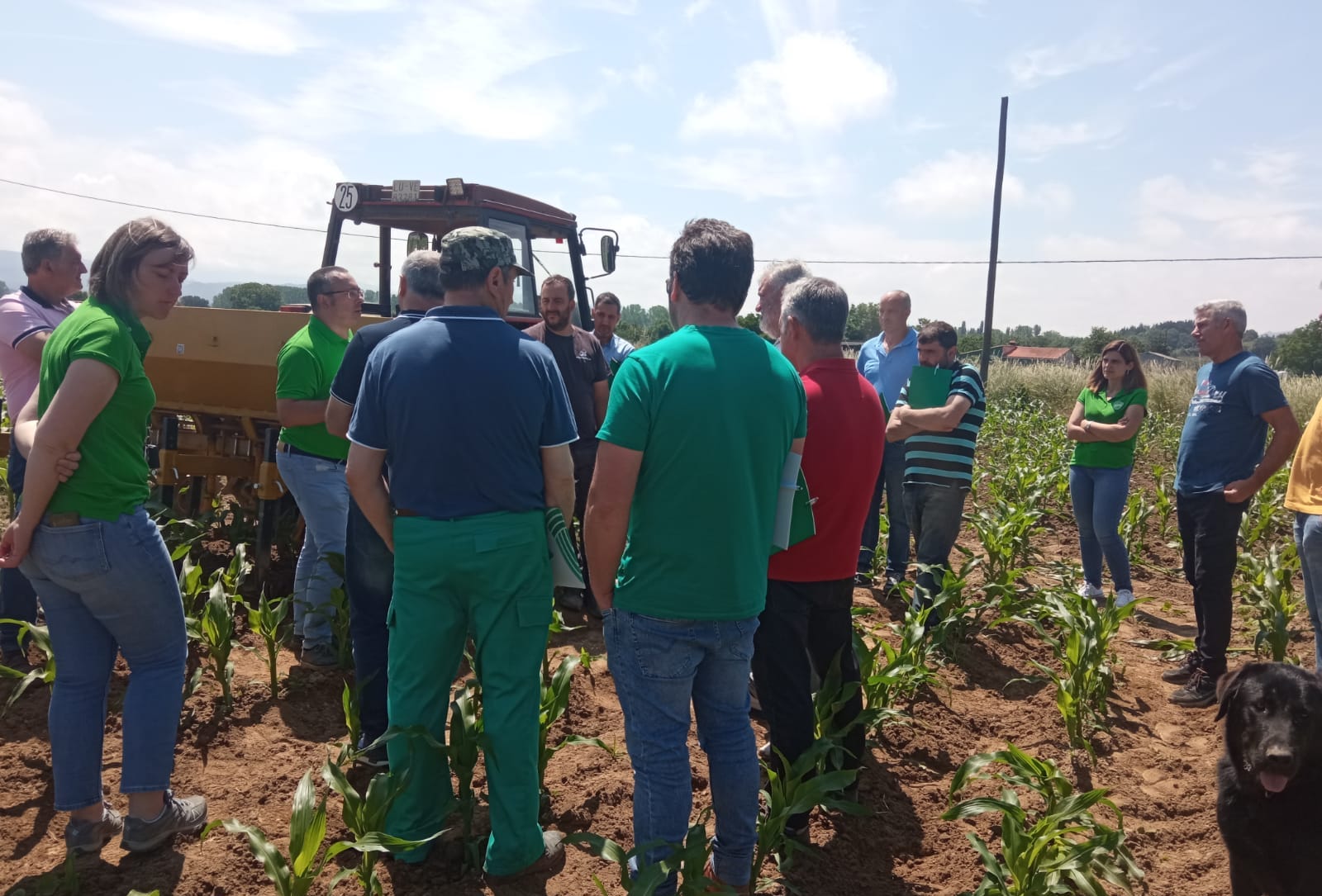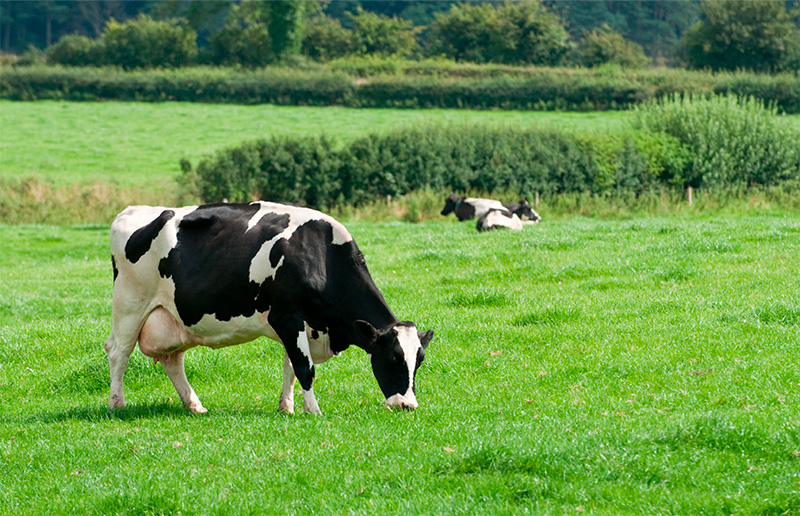Providing corn with adequate fertilization is essential to achieve a good harvest, so at AIRA we address some of the keys to take into account to achieve it in a field day.
The training session was held in Sarria and was attended by farmers from different areas, as well as AIRA technicians from different delegations.
In the fertilization of corn it is highly recommended to distribute the nitrogen supply that is made to the crop and do it in several times, due to the losses that occur. “The efficiency of fertilization is greatly increased if the plant has nitrogen at the times of greatest demand”, explained from the agronomic service of AIRA.
One of the options for spreading the dose of nitrogen that is given to the corn is to do it twice, using granulated fertilizers in both cases. Thus, a first fertilization is made before planting and then a second fertilization is made just before the corn closes, that is, before it begins to tassel. “You have to make this second contribution when the corn has between 8 and 10 leaves, so that you can still enter without damaging the crop,” they point out from the agronomic service of the Cooperative.
“
The efficiency of fertilization is greatly increased if nitrogen is available to the plant at the time of greatest demand
”
This method of fertilization was discussed during the informative day and the participants saw the application of one of the products that can be used in the second application of fertilizer, when the plant begins to till. The AMIDAS fertilizer was used, with an application of 150 kg/hectare, using a tedding machine that also allows the fertilizer to be applied.
Among other advantages, AMIDAS is a concentrated fertilizer that allows the use of low doses and a significant gain in application performance. “The application is practical and economical. Thus, with a 1,500 kg fertilizer spreader, between 8 and 10 hectares can be done in a short time”, it was explained at the conference.
It is recommended to apply this fertilizer at a rate of 125-200 kg/ha depending on the expected production (35-70 Tn/ha). Amidas includes sulfur in its composition, which helps plants to assimilate nitrogen. Another advantage of this product is that it does not damage the corn, causing burns as occurs with other fertilizers. In addition, the sulfation process of urea minimizes evaporation losses if it is applied on the surface.
Fertilizer supply and corn thinning
The application of this granular fertilizer was done with a corn tedder. This is one of the implements, along with the suspended fertilizer spreaders, with which to apply fertilizer to the crop in this growth phase. In addition, in the session they also reminded the benefits that reddening the soil provides to the crop. “Reddressing the corn brings many benefits to the corn. It is a very old technique that has fallen into disuse due to changes in farm mechanization,” explained the agronomic department of AIRA.

In particular, tilling the corn allows breaking the crust that forms on the surface of the soil and the cracks that cause water to be lost in depth. In addition, leasing corn causes new roots to grow, greatly improving their density and efficiency.
It is also a practice that allows freeing the soil of some weeds that are still on the farm at that moment. In addition, by burying the fertilizer, losses are minimal.
Why is it important to apply a foliar fertilizer to corn?
Participants were also informed about the use of foliar fertilizers, to be applied together with the herbicide. Foliar fertilizers can provide micronutrients, biostimulants and nitrogen.
“Foliar fertilizers have a different function than granular fertilizers. Foliar fertilizers provide small amounts of nutrients, but they do it in a very fast and efficient way, which allows giving a boost to plant growth,” explain the technicians.
There are two main types of foliar fertilizers:
-Those that provide nitrogen. They are fertilizers that complement the one that the plants receive through the roots at times of high demand.
-Those that provide micronutrients and stimulants. Micronutrients are necessary in small quantities. Some of the micronutrients are not very mobile, besides being scarce in many soils, so a foliar incorporation ensures that the plant has these essential nutrients and thus grow better without this limitation. Stimulants have the function of reactivating the plant in stressful situations, such as the effect of herbicides, a punctual drought, cold nights, etc.
The application of foliar fertilizers must always be done under the prescription of the Cooperative’s technician. In addition, it is recommended to use these foliar fertilizers at the same time that the herbicide is applied, in order to reduce costs, so that it does not imply an extra application cost. It should be taken into account that foliar fertilizers have a reduced cost and the benefits they provide are important.


